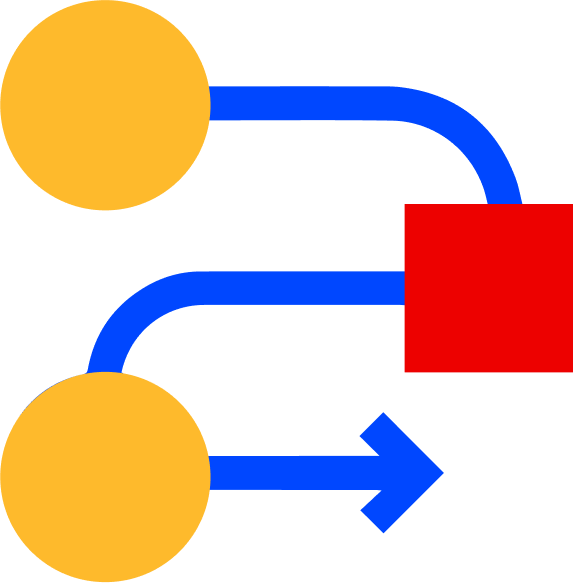AI Governance in the Workplace: Legal Risks and Compliance for EMEA Businesses


AI governance in EMEA workplaces means complying with strict rules like the EU AI Act and GDPR while managing risks such as bias, privacy violations, and unfair hiring practices. Companies that fail to follow these requirements face legal penalties, reputational harm, and employee distrust. Strong governance strategies protect businesses by aligning AI use with transparency, accountability, and local regulations.
Are EMEA companies unknowingly risking compliance by allowing AI use without structured oversight? Insufficient governance and policy gaps expose firms to legal pitfalls under GDPR and the evolving EU AI Act.
Let's look into how proper AI governance in EMEA workplaces can safeguard against bias, privacy breaches, and legal liabilities.
Which European Country Is Best for AI?
France and Germany have directed large public funds toward AI research and industry projects. Ireland and the Netherlands have also built strong tax incentives that attract international firms. These investments make it easier for businesses to expand while staying aligned with AI risk management goals.
Several countries have placed AI literacy requirements at the center of their education and workforce policies. Germany invests in reskilling programs, while the UK emphasizes digital learning in its post-Brexit strategies. It creates a more prepared workforce for AI workplace adoption.
What Is the European Union Approach to AI?
The European Union is shaping one of the most detailed approaches to regulating artificial intelligence. The EU AI Act sets out clear rules that affect how companies design, buy, and use AI systems in the workplace.
The EU AI Act places AI tools into categories that run from minimal risk to prohibited. Minimal risk tools may face little oversight, while high-risk systems have strict rules. Prohibited uses include AI that violates human rights or manipulates behavior. This tiered system gives companies a roadmap for compliance.
High-risk AI systems in HR face closer review because of their impact on hiring, promotions, and employee rights. These tools must be tested for fairness and bias before they can be used. Companies also need documentation to prove compliance with the EU AI Act compliance standards.
AI Governance in EMEA Workplaces
AI governance in EMEA workplaces is not only about adopting new tools but also about shaping how they are used within strict legal boundaries. Companies must find ways to align innovation with existing and new regulations.
There are three main areas where governance plays the biggest role:
- Meeting GDPR AI compliance obligations
- Managing AI procurement legal challenges
- Balancing cross-border rules under EMEA business regulation
Meeting GDPR AI Compliance Obligations
Data protection laws are at the heart of AI governance in EMEA workplaces. GDPR AI compliance requires that personal data be collected and processed fairly.
Companies must have clear consent procedures and provide explanations about how AI uses personal information. This affects everything from recruitment platforms to workplace monitoring tools.
Managing AI Procurement Legal Challenges
Buying AI systems comes with legal risks that many businesses overlook. AI procurement legal issues can arise when vendors don't provide enough information about how their tools were trained or tested. Businesses are responsible for verifying that these systems meet compliance standards, even if they're built by third parties.
Balancing Cross-Border Rules Under EMEA Business Regulation
Many companies in EMEA operate across multiple countries, which adds more complexity to compliance. Each state enforces regulations in its own way, and businesses need strategies to handle these differences. Aligning with EMEA business regulation often means setting one governance framework that applies across borders while still respecting national laws.
AI Risk Management in the Workplace
AI can create bias in hiring or promotions, leading to discrimination claims. Data leaks pose privacy risks under GDPR and can harm a company's reputation.
Liability issues arise when automated systems make decisions that harm employees or customers. These risks demand careful monitoring and clear records.
Many firms set up governance strategies that include ethics boards and regular audits. These steps allow businesses to review how AI is used and make adjustments when risks appear. Documenting outcomes gives regulators proof that the company is serious about AI legal compliance.
Legal disputes involving AI often require access to large amounts of data. eDiscovery in EMEA adds complexity because privacy laws limit how information can be shared across borders. Companies need strong procedures to handle evidence requests without breaking compliance rules.
Frequently Asked Questions
How will AI literacy requirements impact HR and training budgets in EMEA?
AI literacy requirements are becoming part of workplace compliance, not just an optional skill. HR departments may need to dedicate more resources to staff training, covering both technical basics and ethical use of automated systems. This shift raises costs but also helps reduce workplace AI risks by improving employee awareness.
What challenges do multinational companies face with AI procurement legal requirements?
Multinational firms often work with vendors across different regions, which complicates AI procurement legal obligations. Vendor contracts must account for liability if systems fail compliance checks. Companies may also be required to audit third-party providers, adding new layers of cost and responsibility.
How does AI risk management EMEA differ from U.S. or APAC approaches?
AI risk management EMEA often places stronger emphasis on employee rights and privacy than U.S. or APAC frameworks. While the U.S. tends to focus on innovation, and APAC highlights growth and flexibility, EMEA applies strict regulatory measures. This difference makes compliance more complex for businesses operating globally.
What role does AI workplace transparency EU play in employee relations?
AI workplace transparency EU rules require businesses to tell workers when decisions are influenced by automated tools. This helps employees understand how hiring, performance reviews, or promotions are shaped. Transparency can improve trust, but it also creates pressure on companies to explain outcomes clearly.
AI governance in EMEA workplaces is now a central part of business compliance.
Get in touch today to find out how we can help with your eDiscovery.
 eDiscovery
eDiscovery Collections
Collections Processing
Processing Early Case Assessment
Early Case Assessment Information Governance
Information Governance Data Migration
Data Migration Data Archiving
Data Archiving Platform Services
Platform Services Connectors
Connectors Platform API
Platform API Pricing Plans
Pricing Plans Professional Services
Professional Services Technical Support
Technical Support Partnerships
Partnerships About us
About us Careers
Careers Newsroom
Newsroom Reveal
Reveal Logikcull by Reveal
Logikcull by Reveal Events
Events Webinars
Webinars OnnAcademy
OnnAcademy Blog
Blog Content Library
Content Library Trust Center
Trust Center Developer Hub
Developer Hub